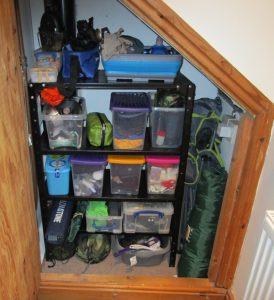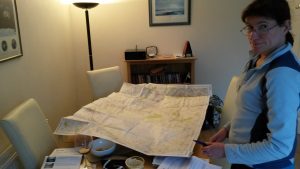In the last couple of weeks, I’ve been helping out a friend at work called Matt, with an adventure trip to Morocco.
After various conversations, it got me to thinking. Are there 10 useful adventure “tools” that cover most of the spectrum of adventure from a cultural weekend in Rome, the lake district in winter, to the Namibian desert.
Purely to assist discussion, I’ve picked my 10. Please remember that this is not meant to replace specialist equipment like a first aid kit.
1. Waterproof Jacket
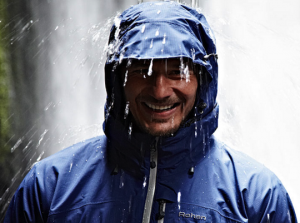
Getting wet is not nice (and remember even if its not raining, a waterproof will stop cold wind, which a jumper probably wont).
I prefer a really light one that you can fold down to the size of a tennis ball.
Get one that extends to the upper thighs and is a nice colour (a waterproof is very usefull in the hills, but a stylish waterproof can be worn in the hills and for traipsing around New York, in the rain.
2. Headtorch
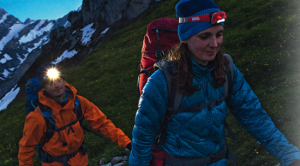
The usefulness of a torch, doesn’t need to be explained here, and in mountain environments can be the difference between life and death.
A torch, is just a torch, but a headtorch can be worn on the head for hands free work or produced from a pocket and held in the hand to find dropped keys on a walk back from the pub.
I’ve always preferred the Petzle brand and ht’s that run on 3 AAA batteries you can get almost anywhere in the world.
3. Orange bivvi bag
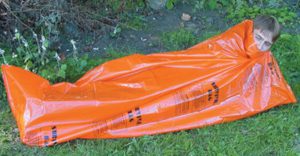
An orange bivvi bag should be taken on every walk. At the very least it can be laid out on the ground and used to sit on while eating sandwiches.
In an emergency, it can be used as a waterproof/windproof shelter and its reckoned for their weight they have saved more lives than rescue helicopters.
4. Swiss Army Knife
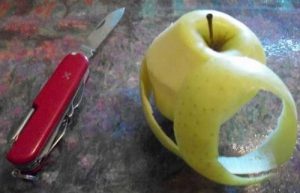
For some adventure environments more specific tools like parangs or sharp fixed blade knives for skinning are better.
The Swiss Army Knife (the one above, isn’t an original Victorinox by the way, but the picture is good) is a do everything tool from opening parcels to repairing spectacles and sharpening pencils.
Large blade, small blade, tin/bottle opener and screwdrivers are generic across the range.
My preferred additional functions are saw, scissors, tweezers and awl. Some newer ones have replaced the corkscrew with a cross head, avoid this at all costs, as a Philips can be improvised much more easily than a corkscrew.
Make a small lanyard from paracord, so you don’t drop it in cold weather. Should be regularly oiled and sharpened, and obviously when travelling on a plane needs to be stowed in the hold.
5. Whistle
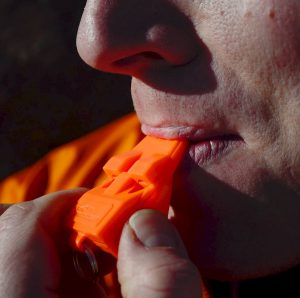
I’ve worn one of these around my neck on adventures for the best part of 30 years.
On a recent talk by Ray Mears he said you should buy several whistles and put one in the pocket of every jacket you might wear while adventuring outdoors.
I quite like the lifeventure whistle, its a fiver but if your ever in trouble, you’ll be glad you spent the money.
The six bursts for emergency and 3 bursts reply (for those that remember it) has been superseded and its important to know the difference.
3 short bursts on the whistle every 60 seconds means I need to be rescued.
6. Lighter
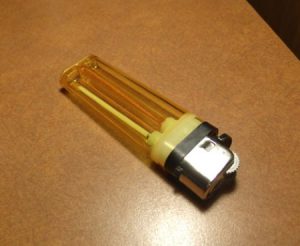
If you’ve every carved a firebow and made fire from friction, you’ll know how rewarding it is…
… and how completely impractical it is for normal life. Stick by the axim of survival school and always make fire (if you need to make one) by the simplest means.
4 for £1 represents the best value in outdoor equipment I think I know off.
If you staying in bothy’s or shelters or something like that, might be worth taking some tea lights as well.
7. Mobile phone in a waterpoof bag
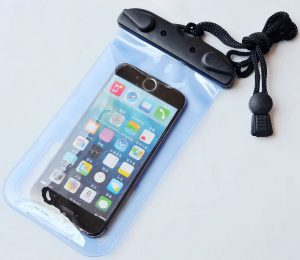
In a bar with wifi, get messages home, confirm flights, check emails, post pictures to friends.
On a boring flight, games like chess and interesting fiction and films to keep you going.
When exploring a new location, maps, travel podcasts and lists of places to see if you haven’t had time to buy a guidebook.
Acts as a backup camera and can save weight as a substitute walkman (a personal stereo to those born in the last 10 years).
Using a mobile in emergency’s has saved lives before and almost certainly will do again.
I have heard daft story’s where people went hill walking and left a map and compass behind, relied on the GPS on the phone (which didn’t work) and then relied on the phone to contact mountain rescue when they got into difficulty (which also didn’t work). Keep one handy, but NEVER really on it exclusively as your emergency plan.
Always keep in a waterproof bag and have a power monkey in your kit if on a long trip.
8. Money belt
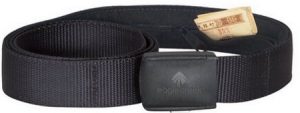
Nothing inspires me more than watching Ray Mears walk into a forest and build shelters, light fires and all sorts of stuff like that using just his skills.
However, in most of the world that I occupy, money is pretty essential too (especially when your in countries where people earn a dollar a day – they don’t have a surplus to feed you if you’ve lost YOUR money.
For that reason, I really like the lifeventure money belt. It’s a brilliant belt in its own right and unlike leather, isn’t affected by getting wet, insects or direct sunlight.
It’s plastic so it won’t set off metal detectors in airports and has an internal zip compartment to store cash (best folded lengthways into thirds).
9. Paracord
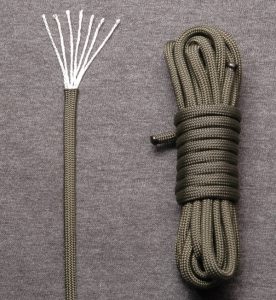
Hundreds of uses, and in emergency’s you can use the inner core for fishing line and for sewing.
Always worth learning important knots and practising re-tying them (which can speed up a long train journey).
10. Cereal Bars

If something goes wrong and you miss your breakfast or you find yourself somewhere exotic and there’s nothing that you want to eat…
… or if your sat in a snowhole and you need emergency food.
Cereal bars. They rock.
The End
What do you think, are there some things you’d include/remove or some things I’ve listed you think are just plain daft.
Either way, give me a shout, and let’s hone this list to perfection.
Near and far, the search for adventure continues…

